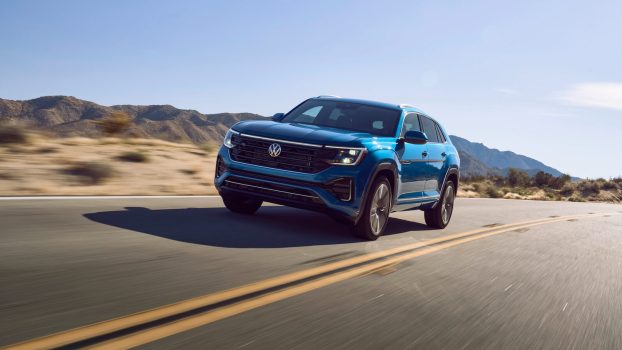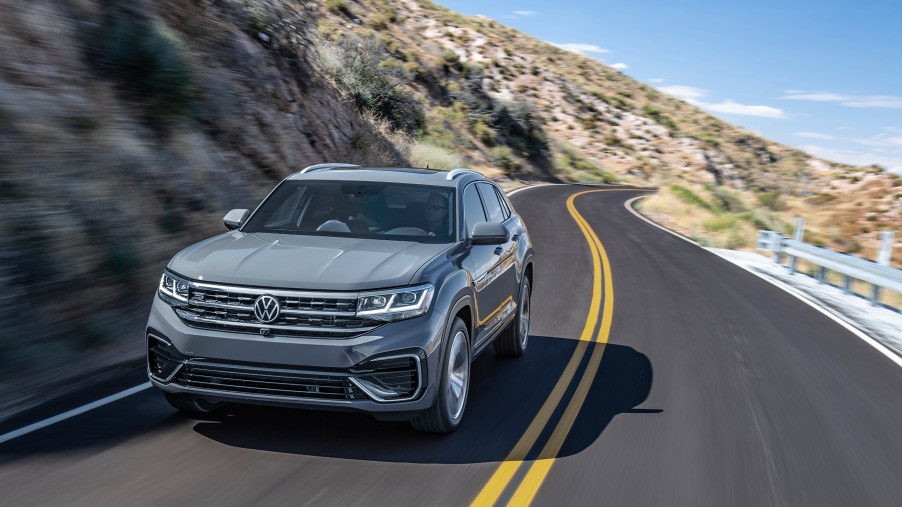
2020 Volkswagen Atlas Cross Sport: How Does it Differ From the Atlas?
Since its introduction in 2018, the Volkswagen Atlas has etched a comfortable spot in the mid-size SUV category with over 140,000 total units sold across the U.S. With the forthcoming Atlas Cross Sport; the brand hopes to double up its footprint in the segment and cater to those looking for an SUV for the utility rather than the space.
More SUV options could mean more sales for Volkswagen, but are the differences that the Cross Sport carries enough to garner interest from consumers to pick the sporty variant over its people-hauling stablemate?
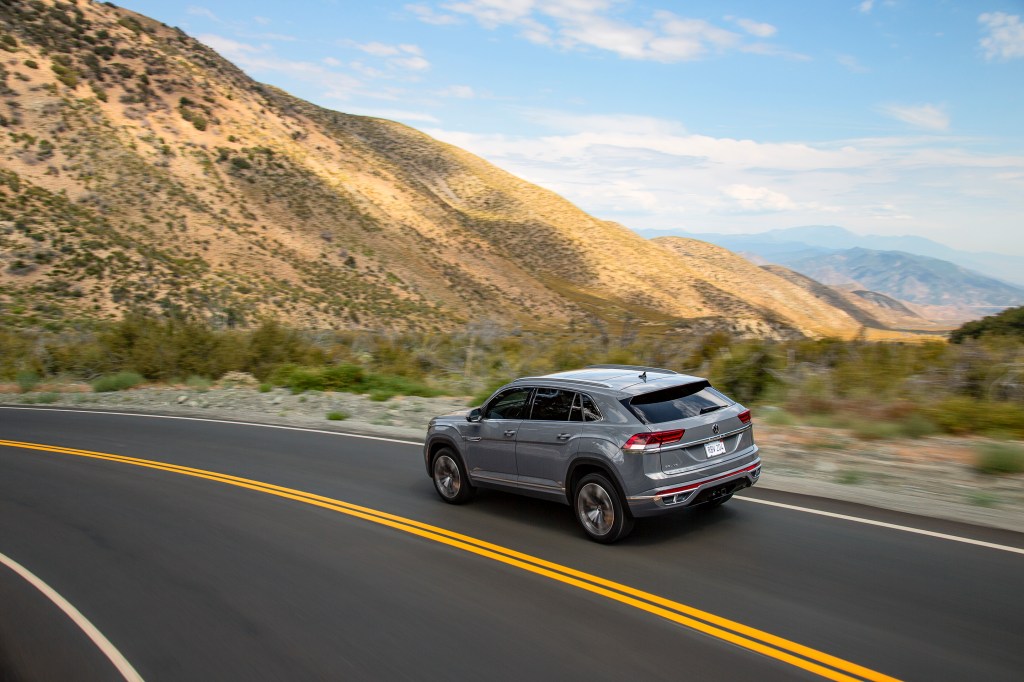
What is the Size Difference Between the Atlas and the Cross Sport?
That’s easy: One seats seven, and the other seats five. All joking aside, though, the Volkswagen Atlas Cross Sport does carry a much sharper, sportier coupe-like look that’s akin to its cousin, the Audi Q8, so it’s easy to see that it’s shorter than the Atlas. The athletic aesthetics do equate to smaller overall body dimensions as the Cross Sport is 2.8 inches shorter than the Atlas, but it does have the same 117.3-inch wheelbase, which equals more room for the five occupants, particularly in the rear seat.
How Different Does the Cross Sport Look?
While the two SUVs do look similar to the casual observer, a closer look will reveal the Cross Sport’s more aggressive front bumper adorned with sport black and chrome treatments and the undeniably steeper rake of the rear windshield. The sportiness carries over to the sides of the vehicle as the doors as chrome accents accentuate the sharp character lines just below the windows, further delineating the Cross Sport’s athletic look to its boxier brother.
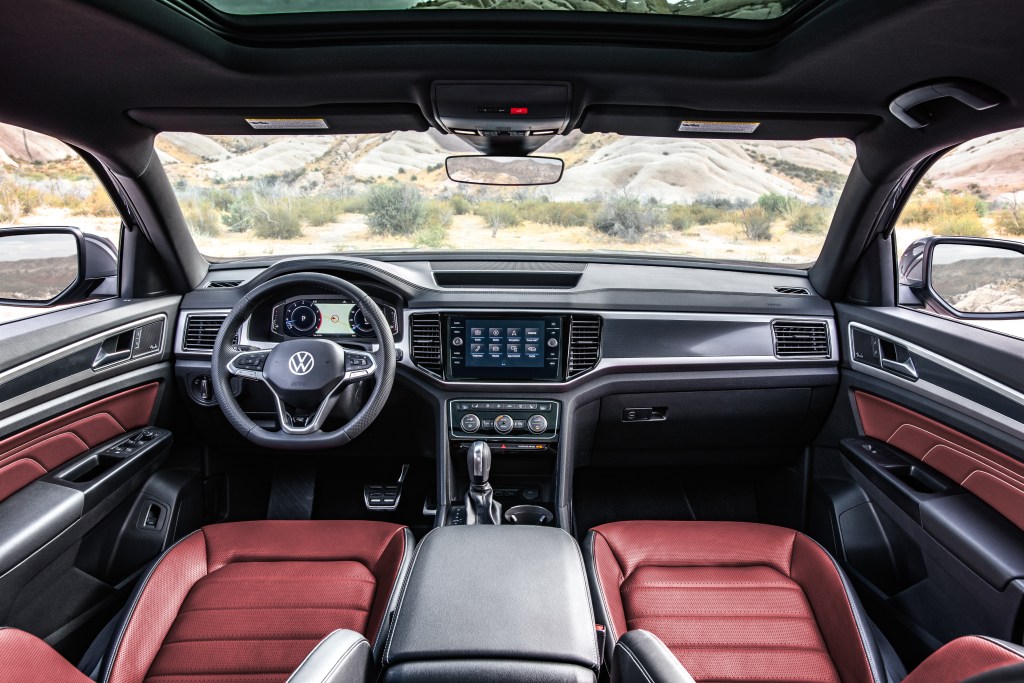
What About the Interior Features?
To be honest, the interiors of both cars look pretty similar, but the Cross Sport does have a flat-bottom steering wheel with “more intuitive controls,” according to Volkswagen, as well as available stitching on the door panels. A Captain’s seat setup isn’t available with the Cross Sport either, but that probably goes without saying.
Otherwise, you get the same technology in both cars, including the Digital Cockpit, heated and ventilated front seats, heated steering wheel, and an available Fender premium 12-speaker audio system. The driver-assist features carry over as well, as both feature Adaptive Cruise Control with Stop and Go, Park Distance Control, and Traffic Jam Assist. One handy feature that the Cross Sport has over the Atlas, though, is the Dynamic Road Sign Display, which displays speed limits, no-passing zones, school zones, and work zones on Cross Sport equipped with factory navigation.
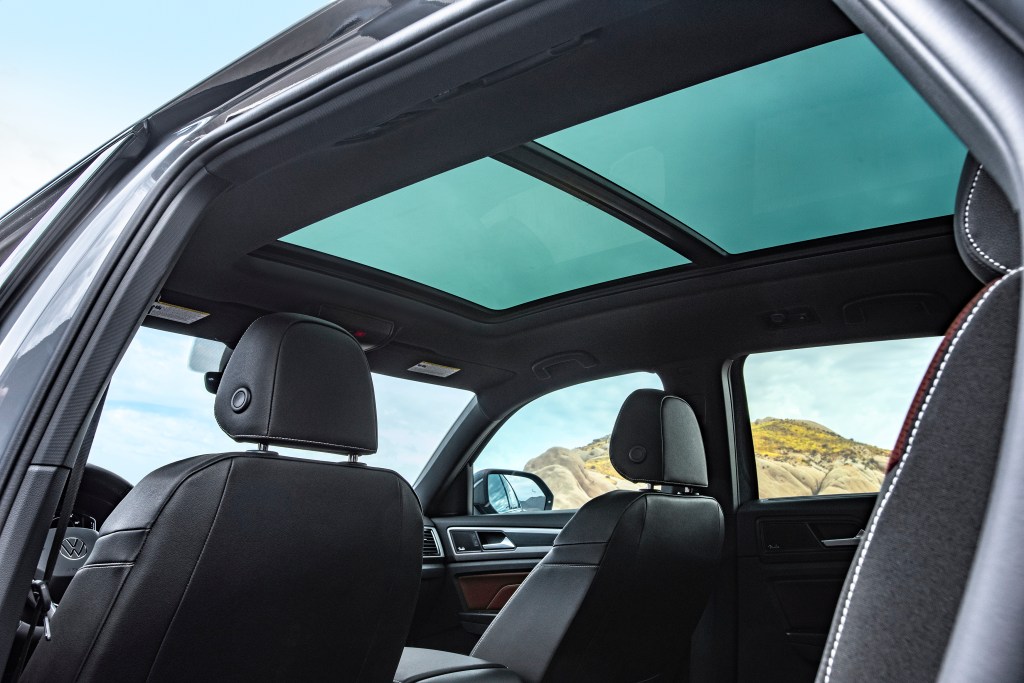
Why Choose One Over the Other?
Choosing between Cross Sport and Atlas really comes down to personal needs at the end of the day. The trim levels and feature list between the two cars are very similar, and you get the same choice of engines; either a 235-horsepower four-cylinder or a 276-horsepower V6.
Pricing varies slightly as the Cross Sport carries an entry price of $30,565 (before destination), which is a little less than the Atlas’ $30,895 starting price tag. All things being equal, we would recommend the Cross Sport over the Atlas if you don’t need the extra seats but want the same features as well as the towing and cargo-hauling capabilities.
